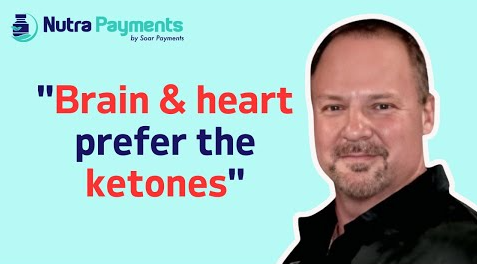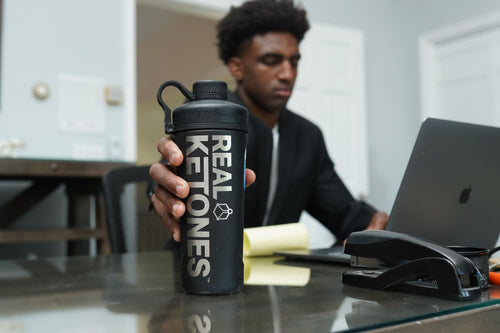When it comes to what does and doesn’t work in terms of effective weight management and lifestyle changes, ketogenic living has definitely made a mark in the industry of health and wellness. If you join the keto-community, you can hear real testimonials from people just like yourself who have seen incredible results by switching to a ketogenic lifestyle.
We know ketosis works by the visible results people see in the mirror and by the success stories we hear time and time again. The other reason we bank on ketosis helping people like yourself is that it comes down to being a science. Based on the way the body works and natural reactions to dietary changes, ketogenic eating effects overall fat burning and has been proven.
Ketosis is a process our bodies go through on a daily basis regardless of what macronutrients you are eating. Switching your diet to low carb choices, focusing on healthy fats and proteins while avoiding sugars, will just increase your ketogenic state and speed up your natural fat burning ability. Our natural calorie burning ability is quite high and many of the calories we consume are just to keep our body going day by day, but too many excess calories or glucose spikes could sabotage your weight loss goals.
WHEN OUR BODY HAS TOO MUCH GLUCOSE
When we consume too many carbohydrates or excessive protein, our bodies begin to break this down as sugar, otherwise known as glucose. Too much glucose is the contributing factor to unwanted weight gain and inability to shed those last few pounds. Note that glucose is needed for the creation of ATP (an energy molecule), which our bodies need for daily energy expenditure and body functions. There are two main processes that happen with too much glucose present in the body.
Glycogenisis occurs when excess glucose is converted to glycogen and stored by the liver and muscle tissue. It’s been estimated that only half of your daily energy needs can be stored as glycogen.
Lipogenisis is related to there being enough glycogen present and any extra glucose present will be stored by the body as fat.
Glucose is necessary in small amounts but too much glucose is linked to fat storing in the body as well as a myriad of health issues. So what happens when we reduce glucose in the body? Ketosis and ketone production begin.
CREATING KETONES
When the body has limited access to food or when you are on a ketogenic diet, the body will start creating molecules called ketones and burning your own fat stores. This is caused by our body’s natural ability to switch metabolic pathways, which is the way our body will break down fat, protein and carbohydrates for ketone energy.
Ketones are created when the body starts breaking down fats and creating fatty acids, being burned by the liver via a process called beta-oxidation. The result of this process is what produces ketones that are then used for fuel as opposed using glucose which is usually a primary source. When the body has no more glucose or glycogen, ketosis will begin and your body will start to use your fat stores as you primary energy source - this is the reason why the state of ketosis is so handy for those looking to manage their weight, safely and naturally. These fatty acids are used in place of glucose by the brain when food intake or carbohydrate intake is low. Research shows that the body and brain actually prefer to use ketone energy and that it is up to 70% more efficient in doing so.
In retrospect to evolution, using ketosis for energy makes perfect sense. Our ancestors didn’t have a readily available high carbohydrate diet like we have now and intermittent states of fasting would have induced ketosis.
EATING SMART FOR KETOSIS
We know that ketogenic eating involves eating higher fats (the healthy kind) and getting the right amount of protein. The protein sources may vary depending on your dietary restrictions, preferences and location. As long as you are eating enough protein and fats each day, your body will naturally encourage the liver to into gluconeogenesis from the fatty acids and amino acids ingested.
Eating too much protein can actually kick you out of ketosis and about 56% of excess protein will be turned into glucose in your bloodstream. On the flipside, if you are not eating enough protein and fat you will eat into hard earned muscle tissue. Eating keto can be easy, so don’t stress too much and just track your macros to make sure you are on track with what your body needs. As soon as you are in the swing of things and have gotten your meal prep and planning down to a science, thinking too hard about what to eat will be a thing of the past.
Don’t fall for the trap of the “starvation diet” as not getting enough vital nutrients and calories is bad for your health, and any initial weight loss will quickly be gained once normal eating is resumed. Ketosis can easily and healthily be achieved through proper nutrition. The ketogenic process is designed to preserve your lean muscle and use your body fat, thus creating a weight loss effect that is healthy and sustainable.
It’s important to know that building a healthy lifestyle change and getting results has a lot to do with your relationship to food, knowing what works and just sticking to your guns about your plan. New ketogenic eaters can find plenty of support in the Kegenix™ community, where plenty of people are sharing tips, tricks and delicious ketogenic recipes.
KETOSIS RECAP
Ketosis is a natural reaction in the body and is safe, efficient and muscle preserving. Ketones are used for energy when we kick start our bodies into “ketosis” where the liver starts using fat for fuel.
Learn more about the nutritional ketosis diet, the benefits of keto energy and kick start your keto power today.

 ACCOUNT
ACCOUNT
 CART
CART





